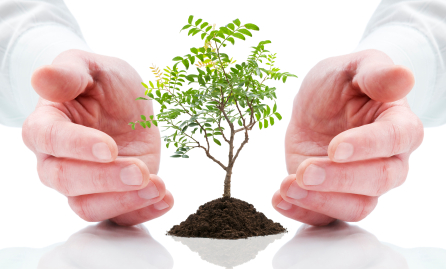History of the term ‘sustainability‘
Sustainability gained concern in the late 1960s as environmental disasters and climate change began to worry humankind. The implications of fossil fuel usage were among the most concerning, as it became clear that they harmed the environment and the ecosystem and put human health in danger. However, the usage of fossil fuels has continued, as it is a significant source of economic sustainability.
1987: The UN World Commission on Environment and Development, also known as the Brundtland Report of 1987, defined ‘sustainability’ as ” meeting the needs of the present without compromising the ability of future generations to meet their own needs.”
1994: Elkington, a philosopher, did not like the Brundtland Report’s definition and, therefore, coined his Triple Bottom Line Concept. His theory states that there are three elements to sustainability for business concerns: social, economic, and environmental aspects.
2018: In 2018, Elkington rephrased his concept by stating that “well-being” must also be measured. As Earth’s climate, water resources, oceans, forests, soils, and biodiversity are increasingly threatened, the well-being of those aspects and of living beings’ interactions within them should also be taken into account. He also stated that his concept has been misinterpreted, as its mission is not to solely focus on economic accounting business measurement but to provoke breakthrough change for future capitalism and inspire market solutions.
‘Sustainability’ today
The current definition of sustainability is ‘well-being.’ In an entirely sustainable world, the ‘well-being’, aka health and happiness, of all lifeforms on Earth would be ensured.

Why ‘sustainability’ matters
‘Sustainability’ is becoming a much more popular topic as the threat to our Earth’s “well-being” has been under attack. Much harm has resulted to life on Earth since the Industrial Revolution began- almost 200 years ago.
Since the Industrial Revolution, humans have imposed a ‘Linear Society’ on this planet. As a result, the linear economy has led to a rapid increase in resource extraction and is responsible for climate change. The model extracts primary natural resources, produces an increasing amount of products generally designed not to last and involve toxic impacts, transports the materials or products worldwide using energy-intensive means, ensures quick and compulsive consumption, and lastly, disposes of the product in landfills or incinerators. It not only drives overconsumption and unsustainable exploitation of natural resources, but it also contributes to an ever-increasing spiral of waste production.

Consider it—modern manufacture, consumption, and waste disposal are unnatural and irresponsible, especially with the high demand and mass production needed for the current planet.
There are currently 8.1 billion humans on this planet. Imagine all the produced, bought, food, cosmetics, and clothes produced, bought, used, and thrown away- all in 1 day- by 8 billion people…

“Human activities are behind nature’s decline. Thanks to human pressures, one
million species may be pushed to extinction in the next few years, with serious
consequences for human beings as well as the rest of life on Earth.”
The sustainable solution to our is to follow The Zero Waste movement and Circular Economy.
These models call for collective action. They require the cooperation of all policymakers and organizations to redesign the current life cycle of products, ensuring no waste and the regeneration of every source used.
Zero Waste has been defined as “designing and managing products and processes to systematically avoid and eliminate the volume and toxicity of waste and materials, conserve and recover all resources, and not burn or bury them.” The concept of zero waste cooperates with the Circular Economy idea.
The Circular Economy is “a new way to design, make, and use things within planetary boundaries.” The Ellen MacArthur Foundation states that if humans were to view waste as a design flaw and harness new materials and technologies, waste and pollution could cease to exist. Therefore, to achieve a Zero-Waste Circular Economy, everyone and everything would need to adapt to the new system.
Countries are already adapting to zero-waste paths; for instance, Europe and the US have begun phasing out incinerators and are now setting year-long goals to achieve zero waste. Ultimately, policies will be required to make this movement legal and economically viable.
What the future of ‘sustainable’ business could look like:
- Services will be sold instead of goods.
- Durable goods will be reparable, reusable, and upgradable.
- Shared or leased ownership will be promoted, and deposit and return programs will exist.
Sustainability is the protection of our well-being, and it is in our hands.

Why You Should Ditch Polyester Underwear for Natural Fabrics
When it comes to underwear, comfort, breathability, and sustainability should be top priorities. While polyester might seem like a practical option due to its affordability and durability, it…
4 min read
Top Sustainable & Cruelty-Free Shampoo and Conditioner Brands
Discover the best sustainable, cruelty-free shampoo and conditioner options! Learn how to choose eco-friendly, vegan haircare that’s good for your hair and the planet. In a world where…
4 min read
An Introduction to Sustainability
History of the term ‘sustainability‘ Sustainability gained concern in the late 1960s as environmental disasters and climate change began to worry humankind. The implications of fossil fuel usage…
4 min read
The Hidden Dangers of Oil-Based Textiles: Why Polyester Isn’t Worth It
In today’s fast-paced world of fashion, synthetic fabrics like polyester dominate store shelves. They’re affordable, versatile, and seemingly durable. But beneath their shiny allure lies a hidden cost…
4 min read




Hi, this is a comment.
To get started with moderating, editing, and deleting comments, please visit the Comments screen in the dashboard.
Commenter avatars come from Gravatar.